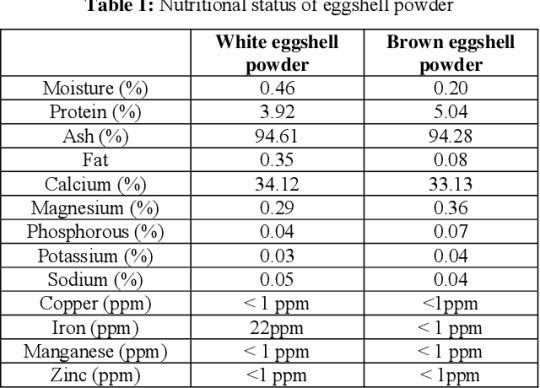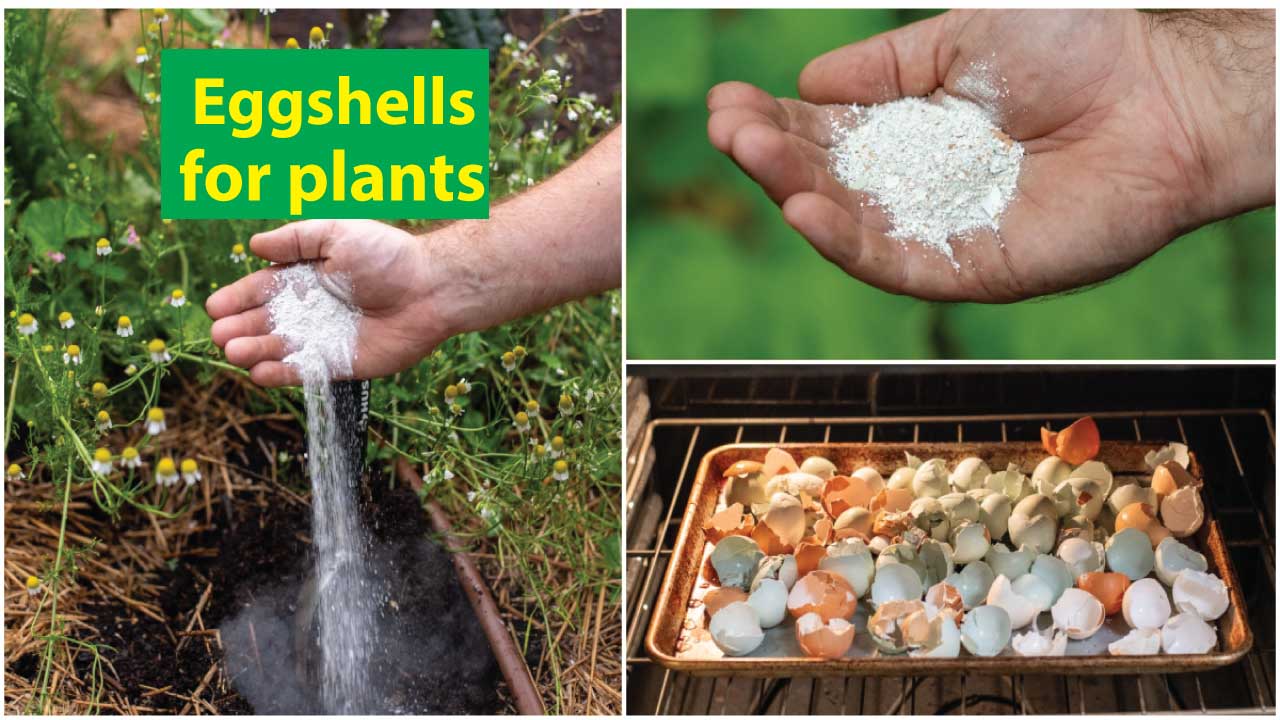Eggshells are a versatile and environmentally friendly addition to any garden. Rich in essential nutrients, they can be used in various ways to promote healthy plant growth. In this comprehensive guide, we’ll explore the benefits of using eggshells in the garden, how frequently they should be applied, the recommended quantities, and how to incorporate them into different gardening setups such as container gardening, roof gardens, and garden beds. We’ll also delve into the nutritional value of eggshells for plants, how each nutrient benefits plant health, and where you can source eggshells or their powdered form on a country-wise basis, along with a price list.
1. Benefits of Using Eggshells in the Garden
Eggshells are packed with calcium carbonate, a vital nutrient for plants, especially for those prone to blossom end rot, such as tomatoes and peppers. But the benefits of eggshells go beyond just calcium:
- Calcium Supplement: Eggshells are primarily composed of calcium carbonate, which helps strengthen plant cell walls and supports healthy growth.
- Soil pH Regulation: When crushed and added to the soil, eggshells can help to slightly raise the pH of acidic soils, making it more suitable for a wider range of plants.
- Pest Deterrent: Crushed eggshells scattered around plants can deter pests such as slugs, snails, and even cutworms. The sharp edges of the shells irritate these pests, preventing them from damaging your plants.
- Natural Fertilizer: Eggshells decompose slowly, gradually releasing nutrients into the soil, acting as a slow-release fertilizer.
- Seed Starters: Eggshells can also be used as biodegradable seed starters. Once the seedlings are ready to be transplanted, the entire shell can be planted in the soil.
2. How Frequently to Use Eggshells in the Garden
The frequency of using eggshells in your garden depends on the needs of your plants and the condition of your soil:
- Regular Maintenance: For general garden maintenance, apply crushed eggshells to the soil at the beginning of the planting season and then every 3-4 weeks throughout the growing season.
- Specific Nutrient Needs: If your plants are showing signs of calcium deficiency, such as yellowing leaves or blossom end rot, you can increase the frequency to once every 2 weeks.
- Pest Control: If using eggshells as a pest deterrent, replenish the layer of crushed shells every week or after heavy rain, as the shells can break down or wash away.
3. How Much Eggshell to Use Per Plant
The amount of eggshell to use can vary based on the plant’s size and its calcium needs:
- Small Plants: For smaller plants or seedlings, a small handful of crushed eggshells (equivalent to 1-2 eggshells) per plant is sufficient.
- Medium Plants: For medium-sized plants, such as lettuce or herbs, use around 2-4 eggshells worth of crushed shells per plant.
- Large Plants: For larger plants, like tomatoes or peppers, use around 4-6 eggshells worth of crushed shells per plant.
- Top Dressing: When using eggshells as a top dressing, scatter a thin layer around the base of each plant, ensuring even coverage.
4. How to Use Eggshells in Container Gardening
Container gardening presents unique challenges, but eggshells can be an excellent addition:
- Preparation: Before planting, mix finely crushed eggshells into the potting soil. This ensures an even distribution of calcium and other nutrients throughout the soil.
- Top Dressing: After planting, you can add a layer of crushed eggshells on top of the soil to act as a slow-release fertilizer and pest deterrent.
- Composting: If you maintain a compost pile for your containers, add crushed eggshells to the compost to enrich it with calcium and other minerals.
5. How to Use Eggshells in Roof Gardens
Roof gardens often face challenges like limited soil depth and harsher conditions, but eggshells can help:
- Soil Mix: Mix crushed eggshells into the soil before planting to improve soil structure and add necessary nutrients.
- Pest Control: Roof gardens can be more susceptible to pests like snails and slugs. Scattering crushed eggshells around plants creates a barrier that helps keep these pests away.
- Fertilization: Use eggshells as a slow-release fertilizer by scattering them around the base of your plants every few weeks.
6. How to Use Eggshells in Garden Beds
Garden beds provide ample space for using eggshells effectively:
- Soil Amendment: Before planting, work crushed eggshells into the top few inches of soil to add calcium and improve drainage.
- Mulching: After planting, use crushed eggshells as a mulch around plants. This helps retain moisture, deters pests, and slowly releases nutrients into the soil.
- Composting: Add eggshells to your compost heap to create a nutrient-rich compost that can be used throughout your garden beds.
7. Nutritional Value of Eggshells for Plants
Eggshells are rich in several key nutrients essential for plant growth:
- Calcium Carbonate (CaCO3): Comprising about 94% of eggshells, calcium carbonate is crucial for cell wall structure, root development, and overall plant health.
- Magnesium: Eggshells contain small amounts of magnesium, which is essential for photosynthesis as it forms the core of the chlorophyll molecule.
- Potassium: Although in trace amounts, potassium in eggshells helps regulate plant metabolism and is vital for water regulation and enzyme activation.
- Phosphorus: Eggshells also contain phosphorus, which supports energy transfer within plants and is essential for root development.
- Other Micronutrients: Eggshells provide small amounts of other micronutrients like sodium, zinc, manganese, and copper, all of which contribute to various physiological processes in plants.

Each of these nutrients plays a specific role in plant growth, helping to strengthen roots, improve resistance to diseases, and enhance overall plant vigor.
8. Country-wise Sources and Price List for Buying Eggshells or Eggshell Powder
If you don’t have access to enough eggshells at home, you can purchase eggshells or eggshell powder. Here’s a guide on where to buy them country-wise, along with an approximate price list:
- United States
- Source: Amazon, Etsy, local farm stores
- Price: $10 – $20 per pound of eggshell powder
- United Kingdom
- Source: eBay, local garden centers
- Price: £7 – £15 per pound of eggshell powder
- Canada
- Source: Walmart, Amazon.ca
- Price: CAD 12 – CAD 25 per pound of eggshell powder
- Australia
- Source: Bunnings, local organic stores
- Price: AUD 15 – AUD 30 per pound of eggshell powder
- India
- Source: Amazon India, local farm markets
- Price: ₹500 – ₹1000 per kilogram of eggshell powder
- Bangladesh
- Source: Daraz, local organic shops
- Price: ৳800 – ৳1500 per kilogram of eggshell powder
9. How to Collect and Prepare Eggshells for plants
Collecting and preparing eggshells for gardening is simple:
- Collection: Save the shells from the eggs you use in cooking. Rinse them to remove any egg residue.
- Drying: Allow the eggshells to dry completely. You can air dry them or place them in a low oven (200°F or 90°C) for 10-15 minutes.
- Crushing: Once dried, crush the eggshells into small pieces. You can use a mortar and pestle, a rolling pin, or a blender for a finer texture.
- Storage: Store the crushed eggshells in an airtight container until ready to use.
Conclusion
Eggshells are an incredibly beneficial and sustainable resource for your garden. Whether you’re using them to amend the soil, deter pests, or provide essential nutrients, they offer a natural and cost-effective solution. With the information provided, you can now confidently incorporate eggshells into your gardening routine, whether you’re working with containers, roof gardens, or traditional garden beds. Plus, with the country-wise guide, sourcing eggshells or their powdered form is easier than ever, ensuring your plants receive the nutritional boost they need for healthy growth.
I apologize for the inconvenience. Here’s a corrected outbound link to a reliable source on using eggshells in the garden:
